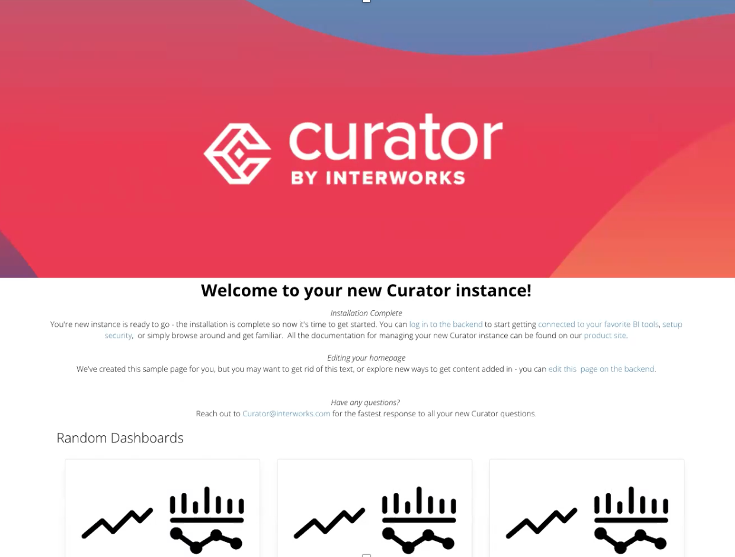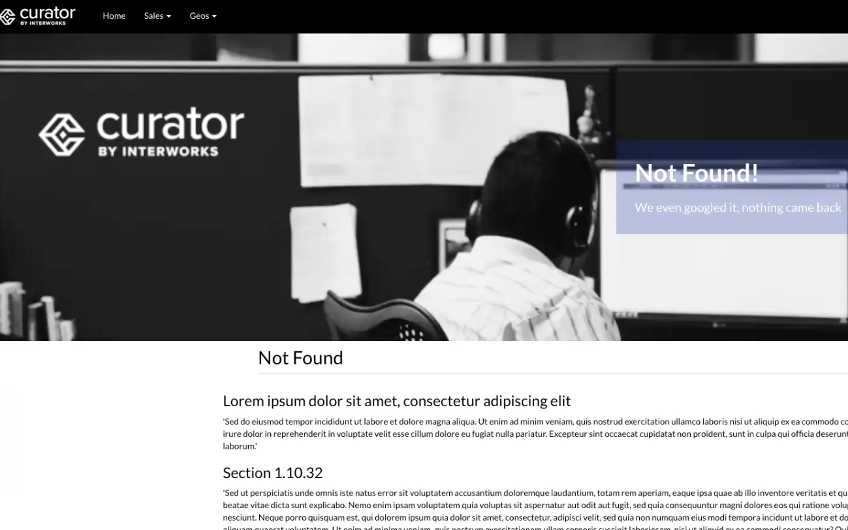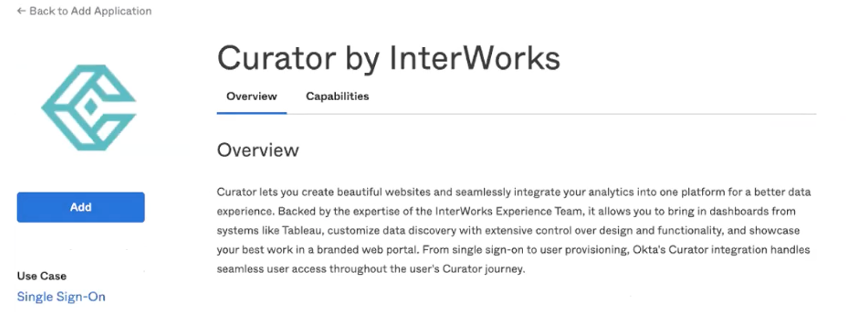Last Updated: 2025-01-31 19:20:35
Webinar Replay: Curator Product Roadmap
Derrick Austin
Curator Platform Lead
April 5, 2022
In this webinar, we spend time reviewing the new offerings and updates for the Curator product. You can find the recording at the bottom of this post.
Experience
When it comes to the backend, we’re always working on ensuring we get you the updates you need to be successful. To that end, we have a couple of new features available.
New Home Screen
We’ve updated the home screen when you launch a new Curator instance to be a bit sleeker and more modern. One of the biggest additions you’ll see is the default header, or the hero image:

The overall setup will be pretty standard with some placeholders you can swap out with your own visualizations. We’re hoping that switching things up like this will enable you to get up and running faster than before.
Page Builder for Home Page
The new Page Builder is now closer to being a 1:1 of the final product for ease of use. You can also now upload images straight to Curator for your projects. We’re aiming to bring ease of use to the builder process, so you have easy access to everything you may need in one single system.
Tabbed Pages
Tabbed Pages is a new beta feature to provide nested pages inside a main page on your dashboard. The goal here is to make finding and managing content easier while maintaining centralization:

Data Groups
Adding data groups lets you embed new sections for displaying various datasets, right on your page. This feature can generate lists of data and lets you add in new estimates immediately. A good way to use it is as a Contact Us page to collect emails tied to a form submission.
Keywords
A new keyword system will let you tag datasets or items for easier location during the creation process. In the new Explorer menu, you can search these keywords and add them to new sections with just a few clicks. It gives you more flexibility in how it shows up, how users filter it, and it increases discoverability.
Custom Error Messages
We also have new customization options for Error 404, Page Not Found, and Error 503, Service Unavailable, messages. These new splash pages can be branded with hero images and custom texts:

Future Happenings
Keep an eye out for these updates coming soon:
- Improved site-wide styling controls
- Title styles
- Font improvements
- Themes
- Improved menu control
- Consistency across Pages and Dashboard pages
- Improved filter setup
- Search improvements
Platform
Installation Page
We’ve got a new update to the Curator website! The installation page is a new, central hub of information about installing on the biggest platforms in the market, like AWS Marketplace, Ubuntu, Windows Server and more. AWS Marketplace is a new addition for Curator hosting as well, with more information on that installation on the Curator page.
OKTA
Curator has now been added to the OKTA catalog. Getting it there is as easy as searching for Curator and hitting the Add button. That’s it—just one click:

Tableau Server Settings
In our April release, the past Tableau Server Settings page will be migrated to the Integrations tab where your connections will be listed. And yes, that is supposed to be plural. You’ll now be able to connect to multiple Tableau dashboards from the Integrations tab!
ThoughtSpot
A new addition to the current Curator lineup, ThoughtSpot will be joining Tableau and Power BI under the supported servers you’re able to connect to. ThoughtSpot has a number of integrations possible: a few liveboards or pinboards can be connected ... even the whole app. Those liveboards can be interacted with just as easily as a Tableau dashboard with a few clicks.
If you want more details about all the new changes coming to Curator, check out the webinar replay below:

Managing a self-hosted web platform can be time-consuming, costly, and complex. If you’re currently self-hosting Curator, migrating to our SaaS platform can unlock a world of advantages designed to make your analytics experience seamless and hassle-free, freeing your team to create further impact on your business.

Recently, Tableau has been encouraging the use of connected apps for external applications, instead of using trusted tickets. All of Tableau’s recent embedding features require connected apps. Since this only deals with behind the scenes authentication, there is no impact to the end user. In our effort to remain closely aligned with Tableau, Curator is transitioning to only using connected apps.

Curator has added the feature to be able to send mark commenting data to a webhook. With the widespread use of API integration platforms, this really opens the doorway to virtually unlimited use cases.
